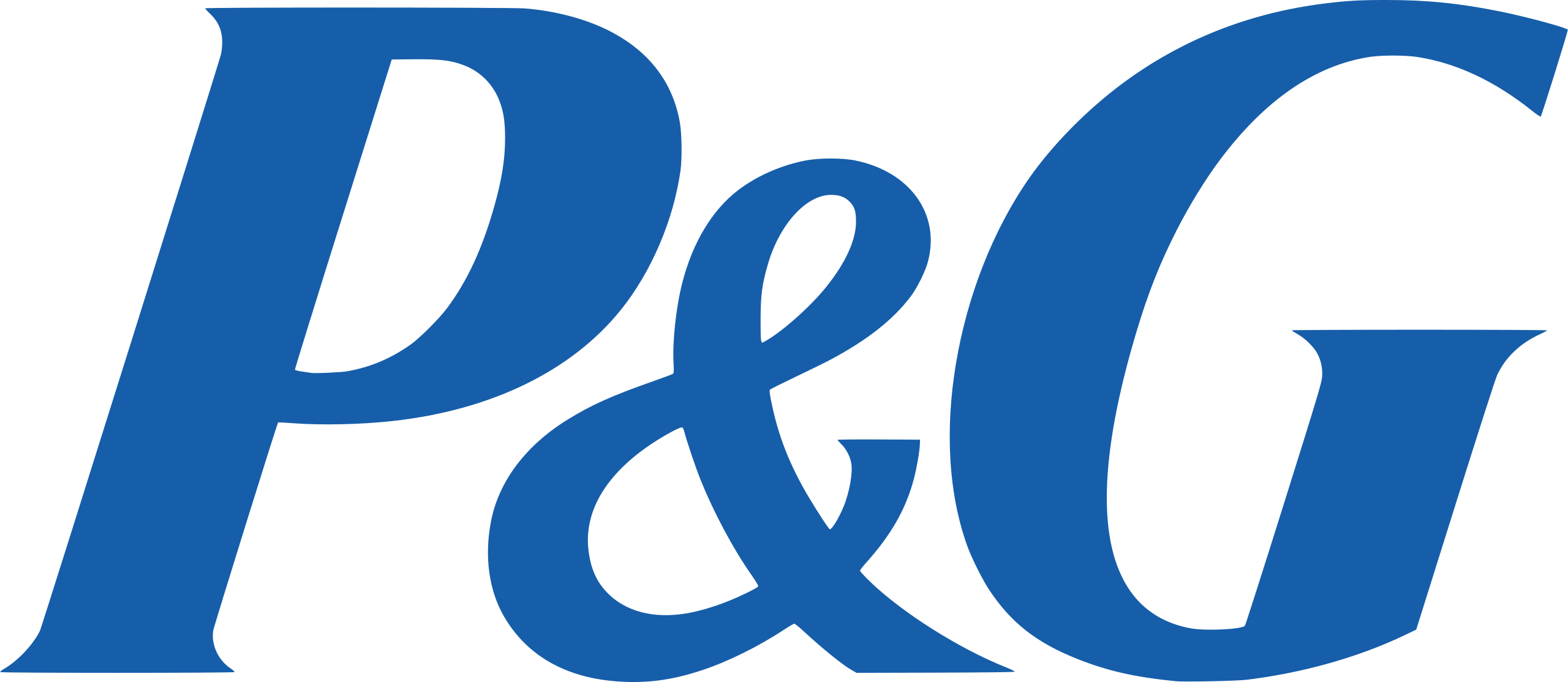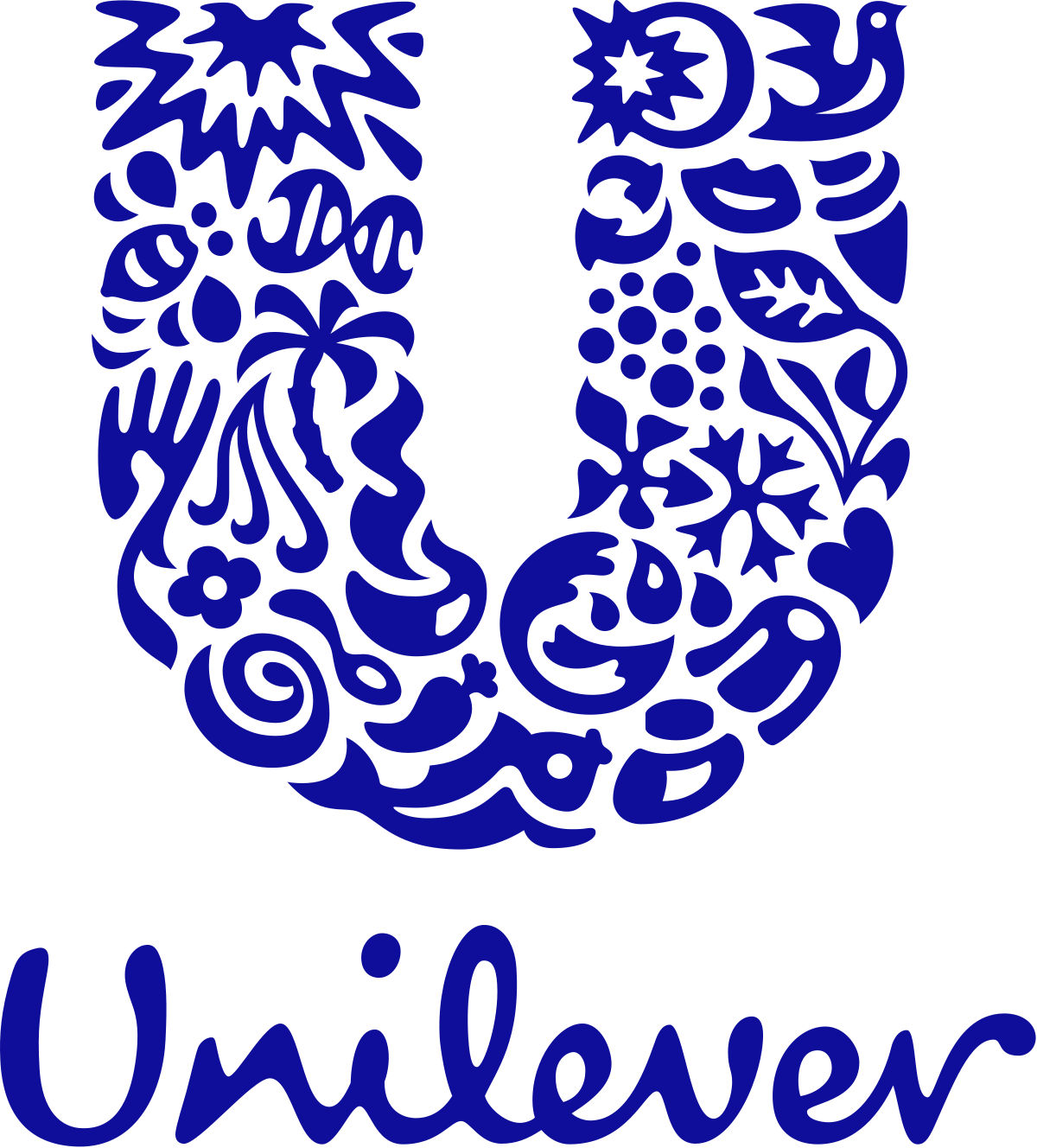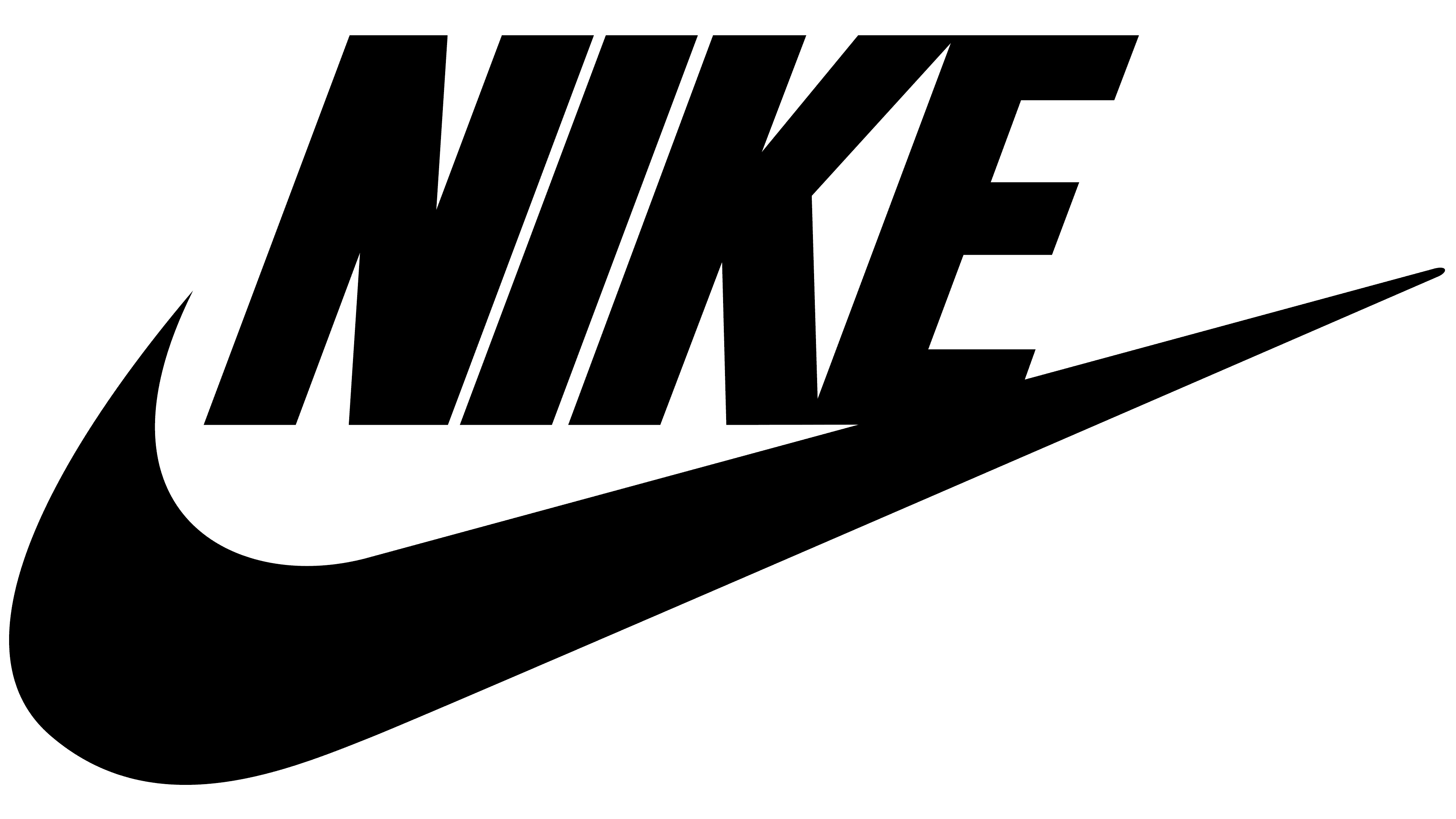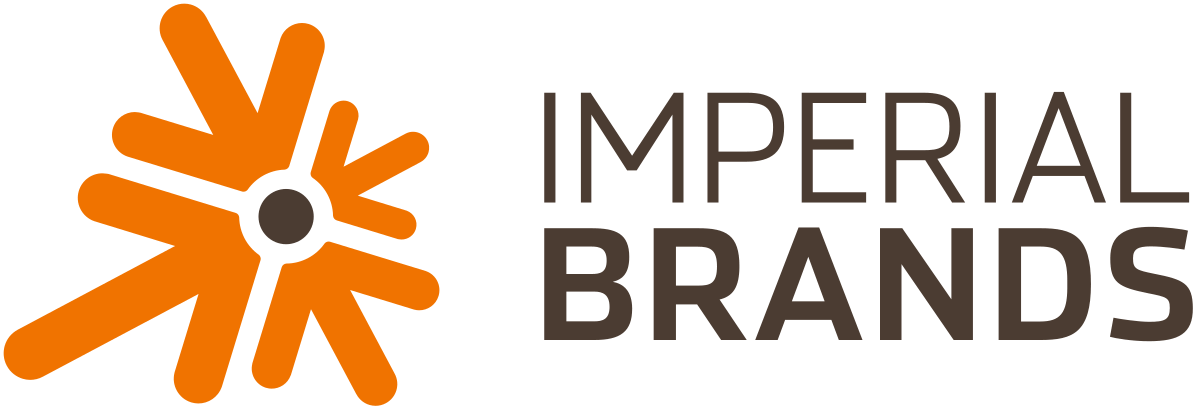Global Body Armor Market was Valued at US$ 2.65 Billion in 2022, Growing at an Estimated CAGR of 6.67% from 2023-2031
Body armor is protective equipment worn by individuals, like law enforcement officers and military personnel, to shield against ballistic threats and projectiles. Constructed from advanced materials, it provides enhanced personal safety in dangerous environments. This armor helps mitigate risks and potential injuries, ensuring greater protection for those facing hazardous situations.
Soft and hard armors are dominating the global body armor market by product type. According to a survey by the National Institute of Justice, soft armor is commonly used by law enforcement, while hard armor is prevalent in military applications. The versatility of both types, catering to various threat levels, solidifies their dominance in the market.
Global Body Armor Market Revenue & Forecast, (US$ Million), 2015 – 2031
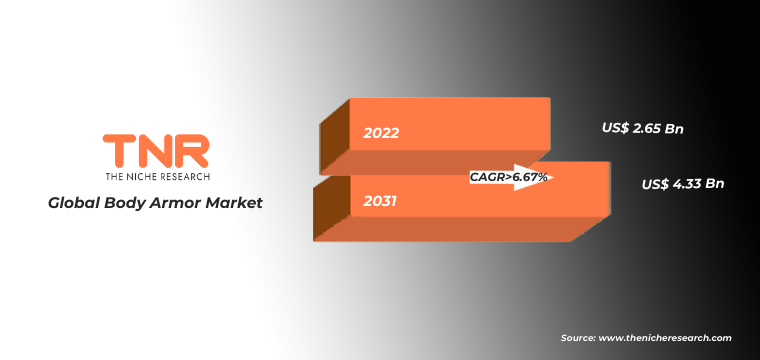
COVID-19 Impact Analysis on Global Body Armor Market
Prior to the pandemic, the body armor market was influenced by rising security concerns and increasing defense spending. Industries such as law enforcement and military were investing in advanced protective gear to enhance personnel safety. The COVID-19 pandemic spotlighted the importance of personal safety. While initial disruptions affected supply chains, heightened security needs drove demand for body armor solutions. Industries recognized the significance of protective equipment in safeguarding personnel, bolstering the market’s growth through increased emphasis on safety measures.
Increasing security concerns serve as a significant driver in the body armor market. The demand for body armor is fueled by law enforcement agencies, military forces, and security personnel aiming to mitigate risks and protect lives in challenging environments. This driver underscores the market’s response to the growing need for effective protective solutions in the face of evolving security threats. The weight and mobility limitations of body armor pose a restraint in the market. A study published in the “Journal of Occupational and Environmental Hygiene” indicated that heavy body armor can lead to discomfort and reduced mobility for personnel.
While advancements in materials have improved this aspect, striking a balance between protection and agility remains challenging. This restraint emphasizes the ongoing efforts to develop lightweight yet robust armor solutions that offer effective defense without compromising the wearer’s mobility and comfort.

The military sector is dominating the global body armor market by end user. Military modernization efforts and geopolitical tensions drive the demand for advanced protective gear. Governments worldwide invest in body armor to ensure soldier safety in combat scenarios, consolidating the military’s dominant position in the market.
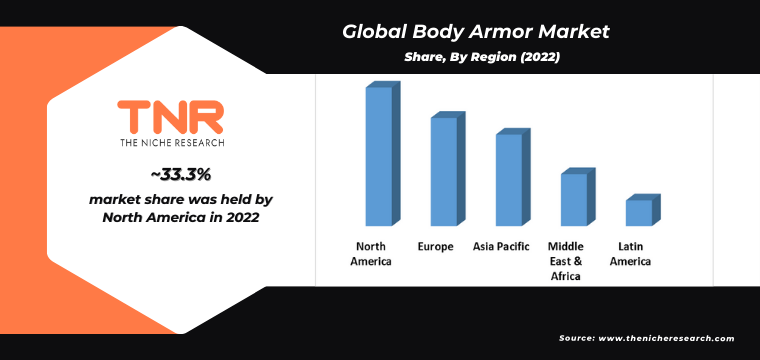
North America recorded highest market share in the global body armor market in 2022. A report by the Small Arms Survey highlighted that North America, primarily the US, has a significant civilian ownership of firearms. This dynamic, along with law enforcement and military needs, solidifies North America’s dominant position in the body armor market.
Competitive Landscape
Key companies operating in the global body armor market are
- 3M
- ArmorSource, LLC
- BAE Systems
- Bluewater Defense, Inc.
- DuPont
- Elmon
- EnGarde body armor
- Honeywell International Inc.
- Point Blank Enterprises, Inc.
- Safariland, LLC
- Sarkar Tactical
- Survitec Group Limited
- U.S. ARMOR CORPORATION
- Other Industry Participants
Global Body Armor Market Report Coverage
| Report Specifications |
Details |
| Market Revenue in 2022 |
US$ 2.65 Billion |
| Market Size Forecast by 2031 |
US$ 4.33 Billion |
| Growth Rate (CAGR) |
6.67% |
| Historic Data |
2015 – 2021 |
| Base Year for Estimation |
2022 |
| Forecast Period |
2023 – 2031 |
| Report Inclusions |
Market Size & Estimates, Market Dynamics, Competitive Scenario, Trends, Growth Factors, Market Determinants, Key Investment Segmentation, Product/Service/Solutions Benchmarking |
| Segments Covered |
By Protection Level, Product Type, By Style, By End User |
| Regions Covered |
North America, Europe, Asia Pacific, Middle East & Africa, Latin America |
| Countries Covered |
U.S., Canada, Mexico, Rest of North America, France, The UK, Spain, Germany, Italy, Nordic Countries (Denmark, Finland, Iceland, Sweden, Norway), Benelux Union (Belgium, The Netherlands, Luxembourg), Rest of Europe, China, Japan, India, New Zealand, Australia, South Korea, Southeast Asia (Indonesia, Thailand, Malaysia, Singapore, Rest of Southeast Asia), Rest of Asia Pacific, Saudi Arabia, UAE, Egypt, Kuwait, South Africa, Rest of Middle East & Africa, Brazil, Argentina, Rest of Latin America |
| Key Players |
3M, ArmorSource, LLC, BAE Systems, Bluewater Defense, Inc., DuPont, Elmon, EnGarde body armor, Honeywell International Inc., Point Blank Enterprises, Inc., Safariland, LLC, Sarkar Tactical, Survitec Group Limited, U.S. ARMOR CORPORATION, Other Industry Participants |
| Customization Scope |
Customization allows for the inclusion/modification of content pertaining to geographical regions, countries, and specific market segments. |
| Pricing & Procurement Options |
Explore purchase options tailored to your specific research requirements |
| Contact Details |
Consult With Our Expert
Japan (Toll-Free): +81 663-386-8111
South Korea (Toll-Free): +82-808-703-126
Saudi Arabia (Toll-Free): +966 800-850-1643
United Kingdom: +44 753-710-5080
United States: +1 302-232-5106
E-mail: askanexpert@thenicheresearch.com
|
Global Body Armor Market:
By Protection Level
- Level II
- Level IIA
- Level III
- Level IIIA
- Level IV
By Product Type
- Soft and Hard Armors
- Clothing
- Helmets
- Accessories
By Style
By End User
By Region
- North America (U.S., Canada, Mexico, Rest of North America)
- Europe (France, The UK, Spain, Germany, Italy, Nordic Countries (Denmark, Finland, Iceland, Sweden, Norway), Benelux Union (Belgium, The Netherlands, Luxembourg), Rest of Europe)
- Asia Pacific (China, Japan, India, New Zealand, Australia, South Korea, Southeast Asia (Indonesia, Thailand, Malaysia, Singapore, Rest of Southeast Asia), Rest of Asia Pacific)
- Middle East & Africa (Saudi Arabia, UAE, Egypt, Kuwait, South Africa, Rest of Middle East & Africa)
- Latin America (Brazil, Argentina, Rest of Latin America)
Report Coverage and Deliverables:
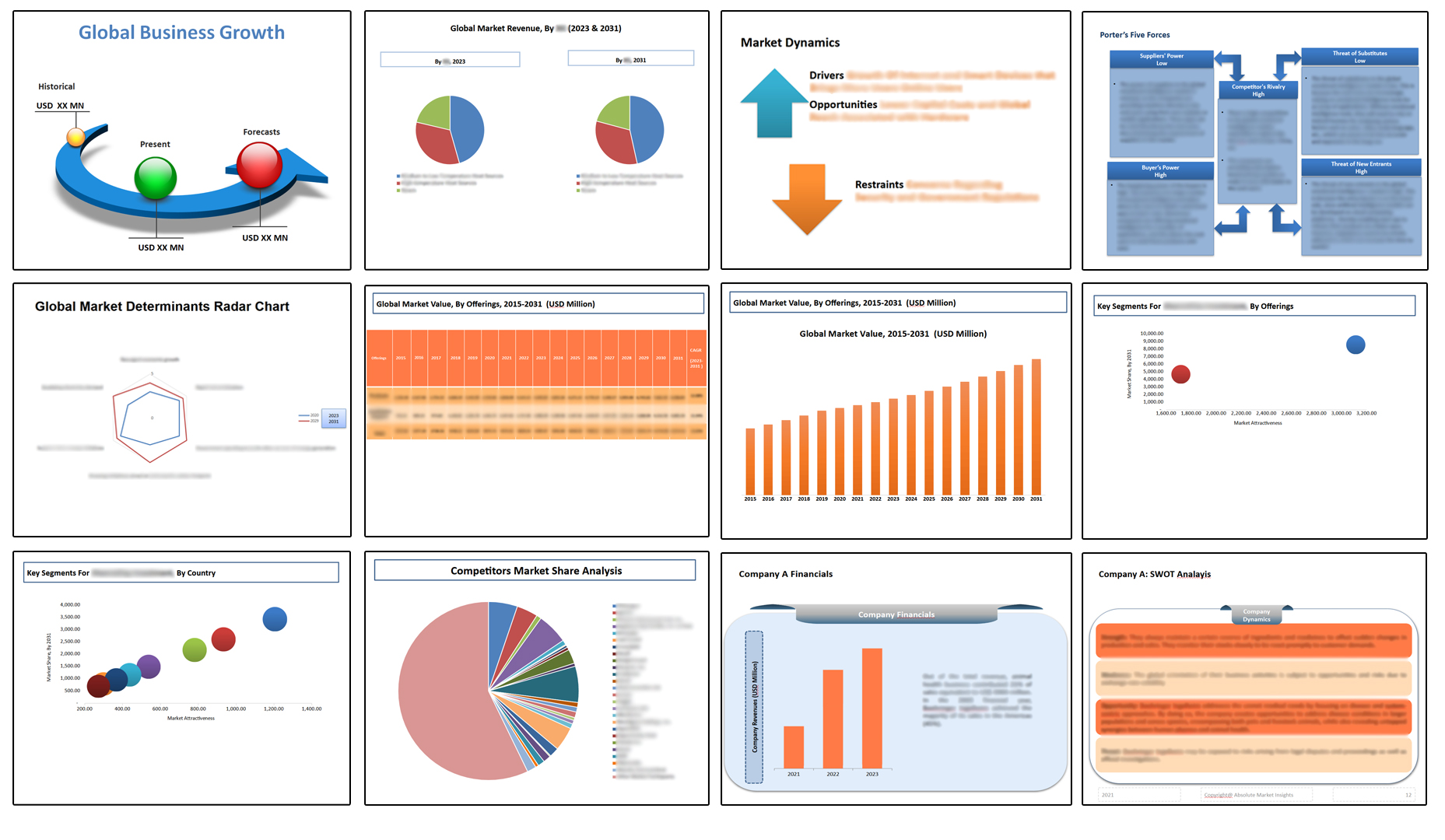
Table of Contents
.
1.Market Scope
1.2.Years Considered
1.2.1.Historic Years: 2015 – 2021
1.2.3.Forecast Years: 2023 – 2031
3.Research Methodology
3.1.Primary Research
3.1.1.Research Questionnaire
3.1.2.Global Percentage Breakdown
3.1.3.Primary Interviews: Key Opinion Leaders (KOLs)
3.3.Market Size Estimates
3.4.Data Triangulation Methodology
4.Recommendations and Insights from TNR’s Perspective**
5.Holistic Overview of Body Armor Market
6.Market Synopsis: Body Armor Market
7.Body Armor Market Analysis: Qualitative Perspective
7.1.Introduction
7.1.2.Industry Development
7.3.Trends in Body Armor Market
7.4.Market Determinants Radar Chart
7.5.Macro-Economic and Micro-Economic Indicators: Body Armor Market
7.6.Porter’s Five Force Analysis
7.7.Impact of Covid-19 on Body Armor Market
8.Global Body Armor Market Analysis and Forecasts, 2023 – 2031
8.1.Overview
8.1.1.Global Body Armor Market Revenue (US$ Mn)
8.2.Global Body Armor Market Revenue (US$ Mn) and Forecasts, By Protection Level
8.2.1.Level II
8.2.1.2.Market Estimation and Penetration, 2015 – 2022
8.2.1.3.Market Forecast, 2023 – 2031
8.2.1.4.Compound Annual Growth Rate (CAGR)
8.2.1.5.Regional Bifurcation
8.2.1.5.1.North America
8.2.1.5.1.1.Market Estimation, 2015 – 2022
8.2.1.5.1.2.Market Forecast, 2023 – 2031
8.2.1.5.2.Europe
8.2.1.5.2.1.Market Estimation, 2015 – 2022
8.2.1.5.2.2.Market Forecast, 2023 – 2031
8.2.1.5.3.Asia Pacific
8.2.1.5.3.1.Market Estimation, 2015 – 2022
8.2.1.5.3.2.Market Forecast, 2023 – 2031
8.2.1.5.4.Middle East and Africa
8.2.1.5.4.1.Market Estimation, 2015 – 2022
8.2.1.5.4.2.Market Forecast, 2023 – 2031
8.2.1.5.5.Latin America
8.2.1.5.5.1.Market Estimation, 2015 – 2022
8.2.1.5.5.2.Market Forecast, 2023 – 2031
8.2.2.Level IIA
8.2.2.2.Market Estimation and Penetration, 2015 – 2022
8.2.2.3.Market Forecast, 2023 – 2031
8.2.2.4.Compound Annual Growth Rate (CAGR)
8.2.2.5.Regional Bifurcation
8.2.2.5.1.North America
8.2.2.5.1.1.Market Estimation, 2015 – 2022
8.2.2.5.1.2.Market Forecast, 2023 – 2031
8.2.2.5.2.Europe
8.2.2.5.2.1.Market Estimation, 2015 – 2022
8.2.2.5.2.2.Market Forecast, 2023 – 2031
8.2.2.5.3.Asia Pacific
8.2.2.5.3.1.Market Estimation, 2015 – 2022
8.2.2.5.3.2.Market Forecast, 2023 – 2031
8.2.2.5.4.Middle East and Africa
8.2.2.5.4.1.Market Estimation, 2015 – 2022
8.2.2.5.4.2.Market Forecast, 2023 – 2031
8.2.2.5.5.Latin America
8.2.2.5.5.1.Market Estimation, 2015 – 2022
8.2.2.5.5.2.Market Forecast, 2023 – 2031
8.2.3.Level III
8.2.3.2.Market Estimation and Penetration, 2015 – 2022
8.2.3.3.Market Forecast, 2023 – 2031
8.2.3.4.Compound Annual Growth Rate (CAGR)
8.2.3.5.Regional Bifurcation
8.2.3.5.1.North America
8.2.3.5.1.1.Market Estimation, 2015 – 2022
8.2.3.5.1.2.Market Forecast, 2023 – 2031
8.2.3.5.2.Europe
8.2.3.5.2.1.Market Estimation, 2015 – 2022
8.2.3.5.2.2.Market Forecast, 2023 – 2031
8.2.3.5.3.Asia Pacific
8.2.3.5.3.1.Market Estimation, 2015 – 2022
8.2.3.5.3.2.Market Forecast, 2023 – 2031
8.2.3.5.4.Middle East and Africa
8.2.3.5.4.1.Market Estimation, 2015 – 2022
8.2.3.5.4.2.Market Forecast, 2023 – 2031
8.2.3.5.5.Latin America
8.2.3.5.5.1.Market Estimation, 2015 – 2022
8.2.3.5.5.2.Market Forecast, 2023 – 2031
8.2.4.Level IIIA
8.2.4.2.Market Estimation and Penetration, 2015 – 2022
8.2.4.3.Market Forecast, 2023 – 2031
8.2.4.4.Compound Annual Growth Rate (CAGR)
8.2.4.5.Regional Bifurcation
8.2.4.5.1.North America
8.2.4.5.1.1.Market Estimation, 2015 – 2022
8.2.4.5.1.2.Market Forecast, 2023 – 2031
8.2.4.5.2.Europe
8.2.4.5.2.1.Market Estimation, 2015 – 2022
8.2.4.5.2.2.Market Forecast, 2023 – 2031
8.2.4.5.3.Asia Pacific
8.2.4.5.3.1.Market Estimation, 2015 – 2022
8.2.4.5.3.2.Market Forecast, 2023 – 2031
8.2.4.5.4.Middle East and Africa
8.2.4.5.4.1.Market Estimation, 2015 – 2022
8.2.4.5.4.2.Market Forecast, 2023 – 2031
8.2.4.5.5.Latin America
8.2.4.5.5.1.Market Estimation, 2015 – 2022
8.2.4.5.5.2.Market Forecast, 2023 – 2031
8.2.5.Level IV
8.2.5.2.Market Estimation and Penetration, 2015 – 2022
8.2.5.3.Market Forecast, 2023 – 2031
8.2.5.4.Compound Annual Growth Rate (CAGR)
8.2.5.5.Regional Bifurcation
8.2.5.5.1.North America
8.2.5.5.1.1.Market Estimation, 2015 – 2022
8.2.5.5.1.2.Market Forecast, 2023 – 2031
8.2.5.5.2.Europe
8.2.5.5.2.1.Market Estimation, 2015 – 2022
8.2.5.5.2.2.Market Forecast, 2023 – 2031
8.2.5.5.3.Asia Pacific
8.2.5.5.3.1.Market Estimation, 2015 – 2022
8.2.5.5.3.2.Market Forecast, 2023 – 2031
8.2.5.5.4.Middle East and Africa
8.2.5.5.4.1.Market Estimation, 2015 – 2022
8.2.5.5.4.2.Market Forecast, 2023 – 2031
8.2.5.5.5.Latin America
8.2.5.5.5.1.Market Estimation, 2015 – 2022
8.2.5.5.5.2.Market Forecast, 2023 – 2031
8.3.Key Segment for Channeling Investments
8.3.1.By Protection Level
9.Global Body Armor Market Analysis and Forecasts, 2023 – 2031
9.2.Global Body Armor Market Revenue (US$ Mn) and Forecasts, By Product Type
9.2.1.Soft and Hard Armors
9.2.1.2.Market Estimation and Penetration, 2015 – 2022
9.2.1.3.Market Forecast, 2023 – 2031
9.2.1.4.Compound Annual Growth Rate (CAGR)
9.2.1.5.Regional Bifurcation
9.2.1.5.1.North America
9.2.1.5.1.1.Market Estimation, 2015 – 2022
9.2.1.5.1.2.Market Forecast, 2023 – 2031
9.2.1.5.2.Europe
9.2.1.5.2.1.Market Estimation, 2015 – 2022
9.2.1.5.2.2.Market Forecast, 2023 – 2031
9.2.1.5.3.Asia Pacific
9.2.1.5.3.1.Market Estimation, 2015 – 2022
9.2.1.5.3.2.Market Forecast, 2023 – 2031
9.2.1.5.4.Middle East and Africa
9.2.1.5.4.1.Market Estimation, 2015 – 2022
9.2.1.5.4.2.Market Forecast, 2023 – 2031
9.2.1.5.5.Latin America
9.2.1.5.5.1.Market Estimation, 2015 – 2022
9.2.1.5.5.2.Market Forecast, 2023 – 2031
9.2.2.Clothing
9.2.2.2.Market Estimation and Penetration, 2015 – 2022
9.2.2.3.Market Forecast, 2023 – 2031
9.2.2.4.Compound Annual Growth Rate (CAGR)
9.2.2.5.Regional Bifurcation
9.2.2.5.1.North America
9.2.2.5.1.1.Market Estimation, 2015 – 2022
9.2.2.5.1.2.Market Forecast, 2023 – 2031
9.2.2.5.2.Europe
9.2.2.5.2.1.Market Estimation, 2015 – 2022
9.2.2.5.2.2.Market Forecast, 2023 – 2031
9.2.2.5.3.Asia Pacific
9.2.2.5.3.1.Market Estimation, 2015 – 2022
9.2.2.5.3.2.Market Forecast, 2023 – 2031
9.2.2.5.4.Middle East and Africa
9.2.2.5.4.1.Market Estimation, 2015 – 2022
9.2.2.5.4.2.Market Forecast, 2023 – 2031
9.2.2.5.5.Latin America
9.2.2.5.5.1.Market Estimation, 2015 – 2022
9.2.2.5.5.2.Market Forecast, 2023 – 2031
9.2.3.Helmets
9.2.3.2.Market Estimation and Penetration, 2015 – 2022
9.2.3.3.Market Forecast, 2023 – 2031
9.2.3.4.Compound Annual Growth Rate (CAGR)
9.2.3.5.Regional Bifurcation
9.2.3.5.1.North America
9.2.3.5.1.1.Market Estimation, 2015 – 2022
9.2.3.5.1.2.Market Forecast, 2023 – 2031
9.2.3.5.2.Europe
9.2.3.5.2.1.Market Estimation, 2015 – 2022
9.2.3.5.2.2.Market Forecast, 2023 – 2031
9.2.3.5.3.Asia Pacific
9.2.3.5.3.1.Market Estimation, 2015 – 2022
9.2.3.5.3.2.Market Forecast, 2023 – 2031
9.2.3.5.4.Middle East and Africa
9.2.3.5.4.1.Market Estimation, 2015 – 2022
9.2.3.5.4.2.Market Forecast, 2023 – 2031
9.2.3.5.5.Latin America
9.2.3.5.5.1.Market Estimation, 2015 – 2022
9.2.3.5.5.2.Market Forecast, 2023 – 2031
9.2.4.Accessories
9.2.4.2.Market Estimation and Penetration, 2015 – 2022
9.2.4.3.Market Forecast, 2023 – 2031
9.2.4.4.Compound Annual Growth Rate (CAGR)
9.2.4.5.Regional Bifurcation
9.2.4.5.1.North America
9.2.4.5.1.1.Market Estimation, 2015 – 2022
9.2.4.5.1.2.Market Forecast, 2023 – 2031
9.2.4.5.2.Europe
9.2.4.5.2.1.Market Estimation, 2015 – 2022
9.2.4.5.2.2.Market Forecast, 2023 – 2031
9.2.4.5.3.Asia Pacific
9.2.4.5.3.1.Market Estimation, 2015 – 2022
9.2.4.5.3.2.Market Forecast, 2023 – 2031
9.2.4.5.4.Middle East and Africa
9.2.4.5.4.1.Market Estimation, 2015 – 2022
9.2.4.5.4.2.Market Forecast, 2023 – 2031
9.2.4.5.5.Latin America
9.2.4.5.5.1.Market Estimation, 2015 – 2022
9.2.4.5.5.2.Market Forecast, 2023 – 2031
9.3.Key Segment for Channeling Investments
10.Global Body Armor Market Analysis and Forecasts, 2023 – 2031
10.2.Global Body Armor Market Revenue (US$ Mn) and Forecasts, By Style
10.2.1.Covert
10.2.1.2.Market Estimation and Penetration, 2015 – 2022
10.2.1.3.Market Forecast, 2023 – 2031
10.2.1.4.Compound Annual Growth Rate (CAGR)
10.2.1.5.Regional Bifurcation
10.2.1.5.1.North America
10.2.1.5.1.1.Market Estimation, 2015 – 2022
10.2.1.5.1.2.Market Forecast, 2023 – 2031
10.2.1.5.2.Europe
10.2.1.5.2.1.Market Estimation, 2015 – 2022
10.2.1.5.2.2.Market Forecast, 2023 – 2031
10.2.1.5.3.Asia Pacific
10.2.1.5.3.1.Market Estimation, 2015 – 2022
10.2.1.5.3.2.Market Forecast, 2023 – 2031
10.2.1.5.4.Middle East and Africa
10.2.1.5.4.1.Market Estimation, 2015 – 2022
10.2.1.5.4.2.Market Forecast, 2023 – 2031
10.2.1.5.5.Latin America
10.2.1.5.5.1.Market Estimation, 2015 – 2022
10.2.1.5.5.2.Market Forecast, 2023 – 2031
10.2.2.Overt
10.2.2.2.Market Estimation and Penetration, 2015 – 2022
10.2.2.3.Market Forecast, 2023 – 2031
10.2.2.4.Compound Annual Growth Rate (CAGR)
10.2.2.5.Regional Bifurcation
10.2.2.5.1.North America
10.2.2.5.1.1.Market Estimation, 2015 – 2022
10.2.2.5.1.2.Market Forecast, 2023 – 2031
10.2.2.5.2.Europe
10.2.2.5.2.1.Market Estimation, 2015 – 2022
10.2.2.5.2.2.Market Forecast, 2023 – 2031
10.2.2.5.3.Asia Pacific
10.2.2.5.3.1.Market Estimation, 2015 – 2022
10.2.2.5.3.2.Market Forecast, 2023 – 2031
10.2.2.5.4.Middle East and Africa
10.2.2.5.4.1.Market Estimation, 2015 – 2022
10.2.2.5.4.2.Market Forecast, 2023 – 2031
10.2.2.5.5.Latin America
10.2.2.5.5.1.Market Estimation, 2015 – 2022
10.2.2.5.5.2.Market Forecast, 2023 – 2031
10.3.Key Segment for Channeling Investments
11.Global Body Armor Market Analysis and Forecasts, 2023 – 2031
11.2.Global Body Armor Market Revenue (US$ Mn) and Forecasts, By End User
11.2.1.Military
11.2.1.2.Market Estimation and Penetration, 2015 – 2022
11.2.1.3.Market Forecast, 2023 – 2031
11.2.1.4.Compound Annual Growth Rate (CAGR)
11.2.1.5.Regional Bifurcation
11.2.1.5.1.North America
11.2.1.5.1.1.Market Estimation, 2015 – 2022
11.2.1.5.1.2.Market Forecast, 2023 – 2031
11.2.1.5.2.Europe
11.2.1.5.2.1.Market Estimation, 2015 – 2022
11.2.1.5.2.2.Market Forecast, 2023 – 2031
11.2.1.5.3.Asia Pacific
11.2.1.5.3.1.Market Estimation, 2015 – 2022
11.2.1.5.3.2.Market Forecast, 2023 – 2031
11.2.1.5.4.Middle East and Africa
11.2.1.5.4.1.Market Estimation, 2015 – 2022
11.2.1.5.4.2.Market Forecast, 2023 – 2031
11.2.1.5.5.Latin America
11.2.1.5.5.1.Market Estimation, 2015 – 2022
11.2.1.5.5.2.Market Forecast, 2023 – 2031
11.2.2.Civilian
11.2.2.2.Market Estimation and Penetration, 2015 – 2022
11.2.2.3.Market Forecast, 2023 – 2031
11.2.2.4.Compound Annual Growth Rate (CAGR)
11.2.2.5.Regional Bifurcation
11.2.2.5.1.North America
11.2.2.5.1.1.Market Estimation, 2015 – 2022
11.2.2.5.1.2.Market Forecast, 2023 – 2031
11.2.2.5.2.Europe
11.2.2.5.2.1.Market Estimation, 2015 – 2022
11.2.2.5.2.2.Market Forecast, 2023 – 2031
11.2.2.5.3.Asia Pacific
11.2.2.5.3.1.Market Estimation, 2015 – 2022
11.2.2.5.3.2.Market Forecast, 2023 – 2031
11.2.2.5.4.Middle East and Africa
11.2.2.5.4.1.Market Estimation, 2015 – 2022
11.2.2.5.4.2.Market Forecast, 2023 – 2031
11.2.2.5.5.Latin America
11.2.2.5.5.1.Market Estimation, 2015 – 2022
11.2.2.5.5.2.Market Forecast, 2023 – 2031
11.3.Key Segment for Channeling Investments
12.North America Body Armor Market Analysis and Forecasts, 2023 – 2031
12.1.Overview
12.1.1.North America Body Armor Market Revenue (US$ Mn)
12.2.North America Body Armor Market Revenue (US$ Mn) and Forecasts, By Protection Level
12.3.North America Body Armor Market Revenue (US$ Mn) and Forecasts, By Product Type
12.3.1.Soft and Hard Armors
12.4.North America Body Armor Market Revenue (US$ Mn) and Forecasts, By Style
12.5.North America Body Armor Market Revenue (US$ Mn) and Forecasts, By End User
12.6.North America Body Armor Market Revenue (US$ Mn) and Forecasts, By Country
12.6.1.U.S
12.6.1.1.U.S Body Armor Market Revenue (US$ Mn) and Forecasts, By Protection Level
12.6.1.2.U.S Body Armor Market Revenue (US$ Mn) and Forecasts, By Product Type
12.6.1.2.1.Soft and Hard Armors
12.6.1.3.U.S Body Armor Market Revenue (US$ Mn) and Forecasts, By Style
12.6.1.4.U.S Body Armor Market Revenue (US$ Mn) and Forecasts, By End User
12.6.2.Canada
12.6.2.1.Canada Body Armor Market Revenue (US$ Mn) and Forecasts, By Protection Level
12.6.2.2.Canada Body Armor Market Revenue (US$ Mn) and Forecasts, By Product Type
12.6.2.2.1.Soft and Hard Armors
12.6.2.3.Canada Body Armor Market Revenue (US$ Mn) and Forecasts, By Style
12.6.2.4.Canada Body Armor Market Revenue (US$ Mn) and Forecasts, By End User
12.6.3.Mexico
12.6.3.1.Mexico Body Armor Market Revenue (US$ Mn) and Forecasts, By Protection Level
12.6.3.2.Mexico Body Armor Market Revenue (US$ Mn) and Forecasts, By Product Type
12.6.3.2.1.Soft and Hard Armors
12.6.3.3.Mexico Body Armor Market Revenue (US$ Mn) and Forecasts, By Style
12.6.3.4.Mexico Body Armor Market Revenue (US$ Mn) and Forecasts, By End User
12.6.4.Rest of North America
12.6.4.1.Rest of North America Body Armor Market Revenue (US$ Mn) and Forecasts, By Protection Level
12.6.4.2.Rest of North America Body Armor Market Revenue (US$ Mn) and Forecasts, By Product Type
12.6.4.2.1.Soft and Hard Armors
12.6.4.3.Rest of North America Body Armor Market Revenue (US$ Mn) and Forecasts, By Style
12.6.4.4.Rest of North America Body Armor Market Revenue (US$ Mn) and Forecasts, By End User
12.7.Key Segment for Channeling Investments
12.7.2.By Protection Level
13.Europe Body Armor Market Analysis and Forecasts, 2023 – 2031
13.1.Overview
13.1.1.Europe Body Armor Market Revenue (US$ Mn)
13.2.Europe Body Armor Market Revenue (US$ Mn) and Forecasts, By Protection Level
13.3.Europe Body Armor Market Revenue (US$ Mn) and Forecasts, By Product Type
13.3.1.Soft and Hard Armors
13.4.Europe Body Armor Market Revenue (US$ Mn) and Forecasts, By Style
13.5.Europe Body Armor Market Revenue (US$ Mn) and Forecasts, By End User
13.6.Europe Body Armor Market Revenue (US$ Mn) and Forecasts, By Country
13.6.1.France
13.6.1.1.France Body Armor Market Revenue (US$ Mn) and Forecasts, By Protection Level
13.6.1.2.France Body Armor Market Revenue (US$ Mn) and Forecasts, By Product Type
13.6.1.2.1.Soft and Hard Armors
13.6.1.3.France Body Armor Market Revenue (US$ Mn) and Forecasts, By Style
13.6.1.4.France Body Armor Market Revenue (US$ Mn) and Forecasts, By End User
13.6.2.The UK
13.6.2.1.The UK Body Armor Market Revenue (US$ Mn) and Forecasts, By Protection Level
13.6.2.2.The UK Body Armor Market Revenue (US$ Mn) and Forecasts, By Product Type
13.6.2.2.1.Soft and Hard Armors
13.6.2.3.The UK Body Armor Market Revenue (US$ Mn) and Forecasts, By Style
13.6.2.4.The UK Body Armor Market Revenue (US$ Mn) and Forecasts, By End User
13.6.3.Spain
13.6.3.1.Spain Body Armor Market Revenue (US$ Mn) and Forecasts, By Protection Level
13.6.3.2.Spain Body Armor Market Revenue (US$ Mn) and Forecasts, By Product Type
13.6.3.2.1.Soft and Hard Armors
13.6.3.3.Spain Body Armor Market Revenue (US$ Mn) and Forecasts, By Style
13.6.3.4.Spain Body Armor Market Revenue (US$ Mn) and Forecasts, By End User
13.6.4.Germany
13.6.4.1.Germany Body Armor Market Revenue (US$ Mn) and Forecasts, By Protection Level
13.6.4.2.Germany Body Armor Market Revenue (US$ Mn) and Forecasts, By Product Type
13.6.4.2.1.Soft and Hard Armors
13.6.4.3.Germany Body Armor Market Revenue (US$ Mn) and Forecasts, By Style
13.6.4.4.Germany Body Armor Market Revenue (US$ Mn) and Forecasts, By End User
13.6.5.Italy
13.6.5.1.Italy Body Armor Market Revenue (US$ Mn) and Forecasts, By Protection Level
13.6.5.2.Italy Body Armor Market Revenue (US$ Mn) and Forecasts, By Product Type
13.6.5.2.1.Soft and Hard Armors
13.6.5.3.Italy Body Armor Market Revenue (US$ Mn) and Forecasts, By Style
13.6.5.4.Italy Body Armor Market Revenue (US$ Mn) and Forecasts, By End User
13.6.6.Nordic Countries
13.6.6.1.Nordic Countries Body Armor Market Revenue (US$ Mn) and Forecasts, By Protection Level
13.6.6.2.Nordic Countries Body Armor Market Revenue (US$ Mn) and Forecasts, By Product Type
13.6.6.2.1.Soft and Hard Armors
13.6.6.3.Nordic Countries Body Armor Market Revenue (US$ Mn) and Forecasts, By Style
13.6.6.4.Nordic Countries Body Armor Market Revenue (US$ Mn) and Forecasts, By End User
13.6.6.5.Nordic Countries Body Armor Market Revenue (US$ Mn) and Forecasts, By Country
13.6.7.Benelux Union
13.6.7.1.Benelux Union Body Armor Market Revenue (US$ Mn) and Forecasts, By Protection Level
13.6.7.2.Benelux Union Body Armor Market Revenue (US$ Mn) and Forecasts, By Product Type
13.6.7.2.1.Soft and Hard Armors
13.6.7.3.Benelux Union Body Armor Market Revenue (US$ Mn) and Forecasts, By Style
13.6.7.4.Benelux Union Body Armor Market Revenue (US$ Mn) and Forecasts, By End User
13.6.7.5.Benelux Union Body Armor Market Revenue (US$ Mn) and Forecasts, By Country
13.6.7.5.2.The Netherlands
13.6.8.Rest of Europe
13.6.8.1.Rest of Europe Body Armor Market Revenue (US$ Mn) and Forecasts, By Protection Level
13.6.8.2.Rest of Europe Body Armor Market Revenue (US$ Mn) and Forecasts, By Product Type
13.6.8.2.1.Soft and Hard Armors
13.6.8.3.Rest of Europe Body Armor Market Revenue (US$ Mn) and Forecasts, By Style
13.6.8.4.Rest of Europe Body Armor Market Revenue (US$ Mn) and Forecasts, By End User
13.7.Key Segment for Channeling Investments
13.7.2.By Protection Level
14.Asia Pacific Body Armor Market Analysis and Forecasts, 2023 – 2031
14.1.Overview
14.1.1.Asia Pacific Body Armor Market Revenue (US$ Mn)
14.2.Asia Pacific Body Armor Market Revenue (US$ Mn) and Forecasts, By Protection Level
14.3.Asia Pacific Body Armor Market Revenue (US$ Mn) and Forecasts, By Product Type
14.3.1.Soft and Hard Armors
14.4.Asia Pacific Body Armor Market Revenue (US$ Mn) and Forecasts, By Style
14.5.Asia Pacific Body Armor Market Revenue (US$ Mn) and Forecasts, By End User
14.6.Asia Pacific Body Armor Market Revenue (US$ Mn) and Forecasts, By Country
14.6.1.China
14.6.1.1.China Body Armor Market Revenue (US$ Mn) and Forecasts, By Protection Level
14.6.1.2.China Body Armor Market Revenue (US$ Mn) and Forecasts, By Product Type
14.6.1.2.1.Soft and Hard Armors
14.6.1.3.China Body Armor Market Revenue (US$ Mn) and Forecasts, By Style
14.6.1.4.China Body Armor Market Revenue (US$ Mn) and Forecasts, By End User
14.6.2.Japan
14.6.2.1.Japan Body Armor Market Revenue (US$ Mn) and Forecasts, By Protection Level
14.6.2.2.Japan Body Armor Market Revenue (US$ Mn) and Forecasts, By Product Type
14.6.2.2.1.Soft and Hard Armors
14.6.2.3.Japan Body Armor Market Revenue (US$ Mn) and Forecasts, By Style
14.6.2.4.Japan Body Armor Market Revenue (US$ Mn) and Forecasts, By End User
14.6.3.India
14.6.3.1.India Body Armor Market Revenue (US$ Mn) and Forecasts, By Protection Level
14.6.3.2.India Body Armor Market Revenue (US$ Mn) and Forecasts, By Product Type
14.6.3.2.1.Soft and Hard Armors
14.6.3.3.India Body Armor Market Revenue (US$ Mn) and Forecasts, By Style
14.6.3.4.India Body Armor Market Revenue (US$ Mn) and Forecasts, By End User
14.6.4.New Zealand
14.6.4.1.New Zealand Body Armor Market Revenue (US$ Mn) and Forecasts, By Protection Level
14.6.4.2.New Zealand Body Armor Market Revenue (US$ Mn) and Forecasts, By Product Type
14.6.4.2.1.Soft and Hard Armors
14.6.4.3.New Zealand Body Armor Market Revenue (US$ Mn) and Forecasts, By Style
14.6.4.4.New Zealand Body Armor Market Revenue (US$ Mn) and Forecasts, By End User
14.6.5.Australia
14.6.5.1.Australia Body Armor Market Revenue (US$ Mn) and Forecasts, By Protection Level
14.6.5.2.Australia Body Armor Market Revenue (US$ Mn) and Forecasts, By Product Type
14.6.5.2.1.Soft and Hard Armors
14.6.5.3.Australia Body Armor Market Revenue (US$ Mn) and Forecasts, By Style
14.6.5.4.Australia Body Armor Market Revenue (US$ Mn) and Forecasts, By End User
14.6.6.South Korea
14.6.6.1.South Korea Body Armor Market Revenue (US$ Mn) and Forecasts, By Protection Level
14.6.6.2.South Korea Body Armor Market Revenue (US$ Mn) and Forecasts, By Product Type
14.6.6.2.1.Soft and Hard Armors
14.6.6.3.South Korea Body Armor Market Revenue (US$ Mn) and Forecasts, By Style
14.6.6.4.South Korea Body Armor Market Revenue (US$ Mn) and Forecasts, By End User
14.6.7.Southeast Asia
14.6.7.1.Southeast Asia Body Armor Market Revenue (US$ Mn) and Forecasts, By Protection Level
14.6.7.2.Southeast Asia Body Armor Market Revenue (US$ Mn) and Forecasts, By Product Type
14.6.7.2.1.Soft and Hard Armors
14.6.7.3.Southeast Asia Body Armor Market Revenue (US$ Mn) and Forecasts, By Style
14.6.7.4.Southeast Asia Body Armor Market Revenue (US$ Mn) and Forecasts, By End User
14.6.7.5.Southeast Asia Body Armor Market Revenue (US$ Mn) and Forecasts, By Country
14.6.7.5.5.Rest of Southeast Asia
14.6.8.Rest of Asia Pacific
14.6.8.1.Rest of Asia Pacific Body Armor Market Revenue (US$ Mn) and Forecasts, By Protection Level
14.6.8.2.Rest of Asia Pacific Body Armor Market Revenue (US$ Mn) and Forecasts, By Product Type
14.6.8.2.1.Soft and Hard Armors
14.6.8.3.Rest of Asia Pacific Body Armor Market Revenue (US$ Mn) and Forecasts, By Style
14.6.8.4.Rest of Asia Pacific Body Armor Market Revenue (US$ Mn) and Forecasts, By End User
14.7.Key Segment for Channeling Investments
14.7.2.By Protection Level
15.Middle East and Africa Body Armor Market Analysis and Forecasts, 2023 – 2031
15.1.Overview
15.1.1.Middle East and Africa Body Armor Market Revenue (US$ Mn)
15.2.Middle East and Africa Body Armor Market Revenue (US$ Mn) and Forecasts, By Protection Level
15.3.Middle East and Africa Body Armor Market Revenue (US$ Mn) and Forecasts, By Product Type
15.3.1.Soft and Hard Armors
15.4.Middle East and Africa Body Armor Market Revenue (US$ Mn) and Forecasts, By Style
15.5.Middle East and Africa Body Armor Market Revenue (US$ Mn) and Forecasts, By End User
15.6.Middle East and Africa Body Armor Market Revenue (US$ Mn) and Forecasts, By Country
15.6.1.Saudi Arabia
15.6.1.1.Saudi Arabia Body Armor Market Revenue (US$ Mn) and Forecasts, By Protection Level
15.6.1.2.Saudi Arabia Body Armor Market Revenue (US$ Mn) and Forecasts, By Product Type
15.6.1.2.1.Soft and Hard Armors
15.6.1.3.Saudi Arabia Body Armor Market Revenue (US$ Mn) and Forecasts, By Style
15.6.1.4.Saudi Arabia Body Armor Market Revenue (US$ Mn) and Forecasts, By End User
15.6.2.UAE
15.6.2.1.UAE Body Armor Market Revenue (US$ Mn) and Forecasts, By Protection Level
15.6.2.2.UAE Body Armor Market Revenue (US$ Mn) and Forecasts, By Product Type
15.6.2.2.1.Soft and Hard Armors
15.6.2.3.UAE Body Armor Market Revenue (US$ Mn) and Forecasts, By Style
15.6.2.4.UAE Body Armor Market Revenue (US$ Mn) and Forecasts, By End User
15.6.3.Egypt
15.6.3.1.Egypt Body Armor Market Revenue (US$ Mn) and Forecasts, By Protection Level
15.6.3.2.Egypt Body Armor Market Revenue (US$ Mn) and Forecasts, By Product Type
15.6.3.2.1.Soft and Hard Armors
15.6.3.3.Egypt Body Armor Market Revenue (US$ Mn) and Forecasts, By Style
15.6.3.4.Egypt Body Armor Market Revenue (US$ Mn) and Forecasts, By End User
15.6.4.Kuwait
15.6.4.1.Kuwait Body Armor Market Revenue (US$ Mn) and Forecasts, By Protection Level
15.6.4.2.Kuwait Body Armor Market Revenue (US$ Mn) and Forecasts, By Product Type
15.6.4.2.1.Soft and Hard Armors
15.6.4.3.Kuwait Body Armor Market Revenue (US$ Mn) and Forecasts, By Style
15.6.4.4.Kuwait Body Armor Market Revenue (US$ Mn) and Forecasts, By End User
15.6.5.South Africa
15.6.5.1.South Africa Body Armor Market Revenue (US$ Mn) and Forecasts, By Protection Level
15.6.5.2.South Africa Body Armor Market Revenue (US$ Mn) and Forecasts, By Product Type
15.6.5.2.1.Soft and Hard Armors
15.6.5.3.South Africa Body Armor Market Revenue (US$ Mn) and Forecasts, By Style
15.6.5.4.South Africa Body Armor Market Revenue (US$ Mn) and Forecasts, By End User
15.6.6.Rest of Middle East & Africa
15.6.6.1.Rest of Middle East & Africa Body Armor Market Revenue (US$ Mn) and Forecasts, By Protection Level
15.6.6.2.Rest of Middle East & Africa Body Armor Market Revenue (US$ Mn) and Forecasts, By Product Type
15.6.6.2.1.Soft and Hard Armors
15.6.6.3.Rest of Middle East & Africa Body Armor Market Revenue (US$ Mn) and Forecasts, By Style
15.6.6.4.Rest of Middle East & Africa Body Armor Market Revenue (US$ Mn) and Forecasts, By End User
15.7.Key Segment for Channeling Investments
15.7.2.By Protection Level
16.Latin America Body Armor Market Analysis and Forecasts, 2023 – 2031
16.1.Overview
16.1.1.Latin America Body Armor Market Revenue (US$ Mn)
16.2.Latin America Body Armor Market Revenue (US$ Mn) and Forecasts, By Protection Level
16.3.Latin America Body Armor Market Revenue (US$ Mn) and Forecasts, By Product Type
16.3.1.Soft and Hard Armors
16.4.Latin America Body Armor Market Revenue (US$ Mn) and Forecasts, By Style
16.5.Latin America Body Armor Market Revenue (US$ Mn) and Forecasts, By End User
16.6.Latin America Body Armor Market Revenue (US$ Mn) and Forecasts, By Country
16.6.1.Brazil
16.6.1.1.Brazil Body Armor Market Revenue (US$ Mn) and Forecasts, By Protection Level
16.6.1.2.Brazil Body Armor Market Revenue (US$ Mn) and Forecasts, By Product Type
16.6.1.2.1.Soft and Hard Armors
16.6.1.3.Brazil Body Armor Market Revenue (US$ Mn) and Forecasts, By Style
16.6.1.4.Brazil Body Armor Market Revenue (US$ Mn) and Forecasts, By End User
16.6.2.Argentina
16.6.2.1.Argentina Body Armor Market Revenue (US$ Mn) and Forecasts, By Protection Level
16.6.2.2.Argentina Body Armor Market Revenue (US$ Mn) and Forecasts, By Product Type
16.6.2.2.1.Soft and Hard Armors
16.6.2.3.Argentina Body Armor Market Revenue (US$ Mn) and Forecasts, By Style
16.6.2.4.Argentina Body Armor Market Revenue (US$ Mn) and Forecasts, By End User
16.6.3.Rest of Latin America
16.6.3.1.Rest of Latin America Body Armor Market Revenue (US$ Mn) and Forecasts, By Protection Level
16.6.3.2.Rest of Latin America Body Armor Market Revenue (US$ Mn) and Forecasts, By Product Type
16.6.3.2.1.Soft and Hard Armors
16.6.3.3.Rest of Latin America Body Armor Market Revenue (US$ Mn) and Forecasts, By Style
16.6.3.4.Rest of Latin America Body Armor Market Revenue (US$ Mn) and Forecasts, By End User
16.7.Key Segment for Channeling Investments
16.7.2.By Protection Level
17.Competitive Benchmarking
17.2.Market Share Analysis, 2022
17.3.Global Presence and Growth Strategies
17.3.1.Mergers and Acquisitions
17.3.3.Investments Trends
18.Player Profiles
18.1.3M
18.1.5.Financial Analysis
18.1.7.Business Strategies
18.2.ArmorSource, LLC
18.2.5.Financial Analysis
18.2.7.Business Strategies
18.3.BAE Systems
18.3.5.Financial Analysis
18.3.7.Business Strategies
18.4.Bluewater Defense, Inc.
18.4.5.Financial Analysis
18.4.7.Business Strategies
18.5.DuPont
18.5.5.Financial Analysis
18.5.7.Business Strategies
18.6.Elmon
18.6.5.Financial Analysis
18.6.7.Business Strategies
18.7.EnGarde body armor
18.7.5.Financial Analysis
18.7.7.Business Strategies
18.8.Honeywell International Inc.
18.8.5.Financial Analysis
18.8.7.Business Strategies
18.9.Point Blank Enterprises, Inc.
18.9.5.Financial Analysis
18.9.7.Business Strategies
18.10.Safariland, LLC
18.10.3.Product Offerings
18.10.5.Financial Analysis
18.10.7.Business Strategies
18.11.Sarkar Tactical
18.11.3.Product Offerings
18.11.5.Financial Analysis
18.11.7.Business Strategies
18.12.Survitec Group Limited
18.12.3.Product Offerings
18.12.5.Financial Analysis
18.12.7.Business Strategies
18.13.U.S. ARMOR CORPORATION
18.13.3.Product Offerings
18.13.5.Financial Analysis
18.13.7.Business Strategies
18.14.Other Market Participants
.
**Exclusive for Multi-User and Enterprise User.
Global Body Armor Market Segmentation
By Protection Level (Revenue, Outlook, 2015 – 2031)
By Product Type (Revenue, Outlook, 2015 – 2031)
By Style (Revenue, Outlook, 2015 – 2031)
By End User (Revenue, Outlook, 2015 – 2031)
By Region (Revenue, Outlook, 2015 – 2031)
◦ North America (U.S., Canada, Mexico, Rest of North America)
◦ Europe (France, The UK, Spain, Germany, Italy, Nordic Countries (Denmark, Finland, Iceland, Sweden, Norway), Benelux Union (Belgium, The Netherlands, Luxembourg), Rest of Europe)
◦ Asia Pacific (China, Japan, India, New Zealand, Australia, South Korea, Southeast Asia (Indonesia, Thailand, Malaysia, Singapore, Rest of Southeast Asia), Rest of Asia Pacific)
◦ Middle East & Africa (Saudi Arabia, UAE, Egypt, Kuwait, South Africa, Rest of Middle East & Africa)
◦ Latin America (Brazil, Argentina, Rest of Latin America)
**Note: The report covers cross-segmentation analysis by region further into countries
The Niche Research approach encompasses both primary and secondary research methods to provide comprehensive insights. While primary research is the cornerstone of our studies, we also incorporate secondary research sources such as company annual reports, premium industry databases, press releases, industry journals, and white papers.
Within our primary research, we actively engage with various industry stakeholders, conducting paid interviews and surveys. Our meticulous analysis extends to every market participant in major countries, allowing us to thoroughly examine their portfolios, calculate market shares, and segment revenues.
Our data collection primarily focuses on individual countries within our research scope, enabling us to estimate regional market sizes. Typically, we employ a bottom-up approach, meticulously tracking trends in different countries. We analyze growth drivers, constraints, technological innovations, and opportunities for each country, ultimately arriving at regional figures.Our process begins by examining the growth prospects of each country. Building upon these insights, we project growth and trends for the entire region. Finally, we utilize our proprietary model to refine estimations and forecasts.
Our data validation standards are integral to ensuring the reliability and accuracy of our research findings. Here’s a breakdown of our data validation processes and the stakeholders we engage with during our primary research:
- Supply Side Analysis: We initiate a supply side analysis by directly contacting market participants, through telephonic interviews and questionnaires containing both open-ended and close-ended questions. We gather information on their portfolios, segment revenues, developments, and growth strategies.
- Demand Side Analysis: To gain insights into adoption trends and consumer preferences, we reach out to target customers and users (non-vendors). This information forms a vital part of the qualitative analysis section of our reports, covering market dynamics, adoption trends, consumer behavior, spending patterns, and other related aspects.
- Consultant Insights: We tap into the expertise of our partner consultants from around the world to obtain their unique viewpoints and perspectives. Their insights contribute to a well-rounded understanding of the markets under investigation.
- In-House Validation: To ensure data accuracy and reliability, we conduct cross-validation of data points and information through our in-house team of consultants and utilize advanced data modeling tools for thorough verification.
The forecasts we provide are based on a comprehensive assessment of various factors, including:
- Market Trends and Past Performance (Last Five Years): We accurately analyze market trends and performance data from preceding five years to identify historical patterns and understand the market’s evolution.
- Historical Performance and Growth of Market Participants: We assess the historical performance and growth trajectories of key market participants. This analysis provides insights into the competitive landscape and individual company strategies.
- Market Determinants Impact Analysis (Next Eight Years): We conduct a rigorous analysis of the factors that are projected to influence the market over the next eight years. This includes assessing both internal and external determinants that can shape market dynamics.
- Drivers and Challenges for the Forecast Period:Identify the factors expected to drive market growth during the forecast period, as well as the challenges that the industry may face. This analysis aids in deriving an accurate growth rate projection.
- New Acquisitions, Collaborations, or Partnerships: We keep a close watch on any new acquisitions, collaborations, or partnerships within the industry. These developments can have a significant impact on market dynamics and competitiveness.
- Macro and Micro Factors Analysis:A thorough examination of both macro-level factors (e.g., economic trends, regulatory changes) and micro-level factors (e.g., technological advancements, consumer preferences) that may influence the market during the forecast period.
- End-User Sentiment Analysis: To understand the market from the end-user perspective, we conduct sentiment analysis. This involves assessing the sentiment, preferences, and feedback of the end-users, which can provide valuable insights into market trends.
- Perspective of Primary Participants: Insights gathered directly from primary research participants play a crucial role in shaping our forecasts. Their perspectives and experiences provide valuable qualitative data.
- Year-on-Year Growth Trend: We utilize a year-on-year growth trend based on historical market growth and expected future trends. This helps in formulating our growth projections, aligning them with the market’s historical performance.
Research process adopted by TNR involves multiple stages, including data collection, validation, quality checks, and presentation. It’s crucial that the data and information we provide add value to your existing market understanding and expertise. We have also established partnerships with business consulting, research, and survey organizations across regions and globally to collaborate on regional analysis and data validation, ensuring the highest level of accuracy and reliability in our reports.






